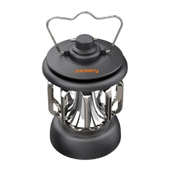Smartphones are an indispensable part of everyone’s lives, so understanding how many amps a phone charger uses is key to knowing how fast and efficiently it can charge your device. Generally, a phone charger uses around 1 to 5 amps, depending on its brand, model, and type. It might not sound much in terms of energy consumption, but for phone addicts, it adds up slowly.
To avoid high bills at the end of the month, you must invest in an alternate charging solution. Solar generators are the best choice because they use clean fuel, which is abundant. Jackery Solar Generators are portable, reliable, and capable chargers that offset your dependence on power grids and can charge your cell phone even when traveling or camping.
Key Takeaways
- The amperage of a phone charger depends on its brand, model, and type. Nowadays, most chargers have an amperage rating of 1 to 5 amps.
- Phone chargers don’t need additional power to start up, i.e., they don’t have any starting wattage. You can use the formula to calculate their wattage value using the formula (Amps = Watts ÷ Volts), check their user manual, or install a power meter.
- You can save on electric bills by unplugging the charger when not in use, installing a power strip, or investing in an energy-efficient charger.

How Many Amps Does a Phone Charger Use?
The amp rating of a phone charger depends on the brand, model, and respective charging ability. Typically, most chargers draw between 1 and 5 amps. Older chargers use 1 to 2 amps, while the faster ones range between 1.5 and 5 amps.
The greater the output current, the faster it can charge a mobile phone. However, supplying power beyond the rated capacity of a mobile phone can cause overheating and potentially affect its health. Conversely, a charger with a lower amp charges your phone much slower but is generally safe.
Definition of Amps, Volts, Watts, Running Watts
Before detailing how many amps a phone charger is, let’s start with the fundamental terminologies you’ll encounter. These help you choose the right charger for your mobile phone if the original one goes missing.
Amp: Amp, represented by A, measures the amount of current or the number of electrons that flow through the wire. You can calculate the amperage value using the following formula:
Amps = Watts/ Volts
For example, for a 30W 12V phone charger, Amps = 30W/12V = 2.5 amps.
Volt: Voltage refers to the electrical potential difference between two points in a circuit, which drives the electric current. The voltage rating of most cell phone chargers ranges between 5 volts and 20 volts, so to determine the actual value, use the formula:
Volts = Watts/ Amps
So, for a 30W 2.5 amps charger, Volt= 30/2.5 = 12 volts.
Watts: Watts or wattage is the electrical energy an appliance consumes during operation. A phone charger has varying wattage values, from 5 watts to 100 watts. To determine how many watts is a phone charger, use the formula:
Watts = Volt x Amps
Running Watts: Running watts is a metric that determines the amount of power an appliance needs to run continuously. Here’s the formula:
Running Watts= Volts × Running Amps
For more details on amps, watts, and volts, check out the ultimate guide, which explains along with examples.
How Many Amps Do Different Phone Chargers Use?
The answer to how many amps a cell phone charger uses varies with the brand, model, and type. For example, older Apple chargers use a 1 amp charger, while standard Android phones support up to 1.5 amps. On the other hand, fast chargers with technologies like Qualcomm’s Quick Charge and USB Power Delivery (PD) can provide output as high as 5 amps. The table below details amp calculation of different phone chargers:
|
Different Phone Chargers |
Rated Volts |
Watts |
Amps (= Watts/Volts) |
|
5W chargers |
5 volt |
5 watts |
1 amps |
|
10W chargers |
5 volt |
10 watts |
2 amps |
|
18W chargers |
9 volt |
18 watts |
2 amps |
|
30W chargers |
9 volts or 15 volts |
30 watts |
3.3 amps or 2 amps |
|
45W chargers |
9 volts or 15 volts |
45 watts |
5 amps or 2 amps |
|
65W chargers |
15 volts or 20 volts |
65 watts |
4.3 amps or 3.25 amps |
|
100W chargers |
20 volts |
100 watts |
5 amps |
How Many Amps Does a Phone Charger Draw on a Startup
A phone charger doesn’t require an additional current when plugged in, regardless of type. However, the power consumption ability depends on the capacity and efficiency of the respective device.
Startup Watts vs. Running Watts
Starting watts refer to the extra wattage an appliance consumes when turned on. It typically applies to appliances with motors or compressors, such as power tools, water pumps, refrigerators, etc. Noting the starting wattage of an appliance from an appliance wattage chart is essential to understanding its power needs or selecting the right generator.
A phone charger, regardless of its model and type, doesn’t have a starting wattage. It draws the amount of power it needs to charge the mobile phone, which is the running wattage, which typically ranges between 5 and 100 watts.
Startup Amps vs. Running Amps
Phone chargers don’t consume an additional amperage upon start-up, and their starting amps are equal to their running amps. That is, they range between 1 amp and 5 amps.
How to Calculate Your Phone Charger Amps
Calculating your phone charger amps is vital for many reasons, but to top it all is the charging speed. The greater the amps value, the faster it charges your cell phone. Using a charger that takes in more amps than your original can cause the phone to overheat and potentially burn out. So, here are the best ways:
Method #1: User Manual or Online
Browse your phone’s user manual for the manufacturer’s recommended amperage. Then, follow it up by looking at the sticker or print on your phone’s original charger. The amperage value is typically denoted as “amps” or “A.” If not, you can look for the necessary information on the manufacturer’s website using your cell phone’s model number and other details.
Method #2: Determine Amps From the Wattage
If your original charger or the website doesn’t provide amperage details but lists the wattage and voltage, you can calculate it using the formula Amps = Watts/Volts. Let’s assume you have a 65W 15V charger, so Amps = 65W/15V = 4.33 amps.
Method #3: Use a Power Meter
If the wattage/voltage information is missing, the final solution is to use a power meter. To do so, plug the power meter into the wall outlet and the charger into the power meter. Then, check the power meter’s display to get the exact amperage information of your charger.
Tips to Save Your Electricity Bill
Fortunately, phone chargers don’t rank amongst your power-hungry appliances, such as refrigerators, air conditioners, etc. However, frequent phone users might need to charge their phones regularly, so it might add up. Considering that electricity prices have risen over the years, conserving energy is a good practice. Here are a few practical ways to save your electric bill:
- Unplug When Not in Use: The charger continues to draw power from the outlet even when the phone is not connected. So, make it a habit to unplug the charger when not in use.
- Use a Power Strip: Installing power strips with an on/off switch can also be a good idea. These have energy-saving features that automatically turn off the chargers when they go into standby mode.
- Choose Efficient and Smart Chargers: Invest in chargers with high energy efficiency ratings to minimize energy consumption.
- Invest in a Solar Generator: Using alternate sources to power your chargers is a great way to save on electric bills. Solar generators are the top choice because they use clean and abundant fuel. The compact and portable Jackery Solar Generators let you charge your phone even on the move or in remote locations for hours.
Solar Generators for a Phone Charger
Phone chargers aren’t very power-hungry, but having an alternate and reliable battery backup solution lets you plug it in at any time without worrying about power outages and rising electric bills. Solar generators are the best choice in this respect as they save the environment and your pocket. Jackery Solar Generators are fumes-free, silent, weather resistant, and low maintenance, making them one of the most reliable battery backup solutions for off-grid setups.
It combines foldable solar panels and portable power stations to collect sunlight and convert it into usable AC current. These have multiple input and output ports, which can power multiple devices at once. You can charge them with carport and AC outlets to stay up to date and sufficiently powered.
Jackery Solar Generator 500
Jackery Solar Generator 500 is a compact charging solution for powering medium—to small appliances like CPAP machines, cameras, smartphones, and more. It is built with durable materials and safety features to ensure safe operation even during high temperatures and power failures.

Jackery Solar Generator 300 Plus
If you’re looking for a mid-size charging solution for your phone charger and other small appliances, then you may consider the Jackery Solar Generator 300 Plus. Its lightweight design and foldable handle let you carry it anywhere. Besides, its multiple outputs ensure you can simultaneously charge your smartphone and other appliances.

Jackery Explorer 100 Plus Portable Power Station
The Jackery Explorer 100 Plus Portable Power Station is one of the smallest power stations, fitting just into your palm. Despite its lightweight design, it can charge your smartphones and other small appliances for hours. Whether traveling on foot or on a plane, this mini battery backup can be an ideal companion to keep your appliances running.

|
Jackery Products |
Capacity & Output Watts |
Phone Charger Running Time |
|
Jackery Solar Generator 500 |
Capacity: 518Wh Rated Output: 500W |
5W charger (5W): 88.06H 10W charger (10W): 44.03H 18W charger (18W): 24.46H 30W charger (30W): 14.68H 45W charger (45W): 9.78H 65W charger (65W): 6.77H 100W charger (100W): 4.4H |
|
Jackery Solar Generator 300 Plus |
Capacity: 288Wh Rated Output: 300W |
5W charger (5W): 48.96H 10W charger (10W): 24.48H 18W charger (18W): 13.6H 30W charger (30W): 8.16H 45W charger (45W): 5.44H 65W charger (65W): 3.76H 100W charger (100W): 2.44H |
|
Jackery Explorer 100 Plus Portable Power Station |
Capacity: 99.2Wh Rated Output: 128W |
5W charger (5W): 16.86H 10W charger (10W): 8.43H 18W charger (18W): 4.68H 30W charger (30W): 2.81H 45W charger (45W): 1.87H 65W charger (65W): 1.29H |
FAQs About Phone Chargers
Is 2.4 amps enough to charge a phone?
Yes, 2.4 amps is enough to charge a phone, and it’s the exact value most modern phones and laptops need. A 2.4-amp charger can charge a phone 58% faster than a 1-amp charger.
What is the difference between a 1 amp and a 2.1 amp charger?
A one-amp charger delivers less electric current than a 2.1-amp charger. This means it takes longer for a one-amp charger to charge a cell phone than a 2.1-amp charger.
How many amps is A USB C phone charger?
The amperage of USB-C chargers isn’t limited to USB-A and can power devices up to 100 watts. Their amp rating ranges between 1 and 5 amps, which is practically enough to charge any smartphone.
Conclusion
Understanding how many amps a phone charger uses is crucial to selecting the ideal charger for your cell phone. Any higher amperage than the required capacity can damage the phone, while lower than that leads to slow charging. Understanding the amperage use is also beneficial in selecting an ideal battery backup solution. Depending on wattage requirements, you can invest in Jackery Solar Generators that are lightweight, environmentally friendly, and support multiple devices. They can also charge your smartphone for hours.




















































































































Leave a comment